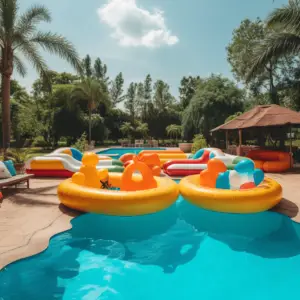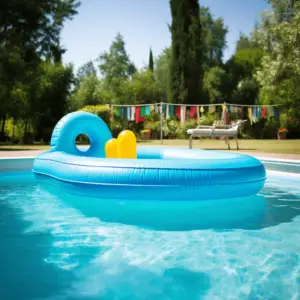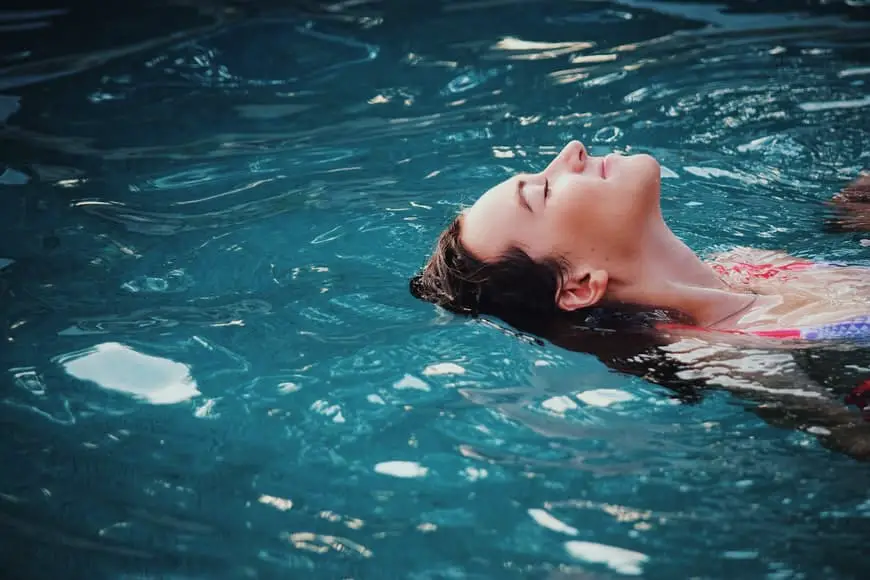Inflatable Pools, When the weather heats up, relaxing in the comfort of your own private pool becomes the ultimate luxury. There’s probably no better way to cool off and have great moments on a hot day. Unfortunately, not everyone has the space, time, or budget for a permanent above-ground pool.
However, with the right inflatable pool; something that is well made and meets your specific household needs, you can take a dip and relax without breaking a sweat.
Many people mistakenly believe that inflatable pools are just for children. But with the advancement of technology, inflatable pools have become more durable and diversified to provide users with many benefits.
You can easily install a large inflatable swimming pool in your home, as long as you have the much-needed.
Table of Contents
Inflatable Ring Pool Problems

Limitations of inflatable pools are obvious: risk of tearing and finding level areas in the yard. Well, this may not be an issue for most homeowners, but it can be a deal-breaker for some.
For instance, if your property is crowded with rocks or susceptible to elements, the inflatable pool isn’t for you. However, it can be a great option for residential homes on solid grass with fenced-in yards.
A swim ring, meanwhile, is a cheap and relatively durable item of swimming equipment that is suitable for non-swimmers. Also known as a rubber ring, this aid is used mostly by children as a way of enhancing their confidence while in the water.
It is worn around the body of the child and similar to armbands, it can hinder arms movements. It does, however, allow freedom and full movement of the legs.
Always important to consider the size of the child to be put into the ring. The swimmer, or rather the child has to be stronger and large enough to be able to support themselves within the ring.
In the event that they are not big or strong enough, they will simply slip through. You may want to consider an alternative buoyancy aid such as arms bands or a swimming vest. While this type of swimming flotation is very old-fashioned, it is still popular due to its low cost and durability.
Prone to Damages
One of the main drawbacks and hazards of an inflatable swimming pool is that it is easily damaged. Children are bound to move and this kind of plastic material can be easily punctured by toys. Therefore, when children play in the swimming pool, be sure to put away the edgy stuff.
Safety Concerns
On the off chance that you purchase a fake and shoddy inflatable swimming pool, the harmful and toxic plastics are likely to bring serious effects on children’s health, given that the child will stay with it for a long time.
In fact, the AAP cautions against children using any air-filled swimming aids at all, including water rings and armbands. This is because any deflation would immediately take away their buoyancy.
Limited Depth
Inflatable swimming pools in general are limited by materials and structures. Although the material is typically durable to reduce the risk of puncture and damage, inflatable products are generally susceptible to tearing no matter what.
Requires Preparation
As mentioned before, you will need to level the ground, spread out the pool, and inflate the ring. Then fill the pool with water. As the water level rises, the ring floats, thereby strengthening the pool’s walls.
Again, one drawback of an inflatable ring pool is that the top ring can get holes in it, causing it to deflate. The good news is that repairing holes in the ring is an easy task, and involves nothing more than a vinyl repair kit.
What Causes an Inflatable Pool to Deflate?
There are a handful of reasons why your inflatable pool could be deflating, but in most cases, the deflation occurs due to changes in the air temperature or when small holes have formed in the pool’s walls. The following breakdown looks at the most possible reasons an inflatable pool may be deflating. We’ve also shared advice on remedying the problems.
Changes in Air Temperature
This is the most obvious factor that can cause an inflatable pool to deflate. When you fill the inflatable pool, you’re introducing warm air. However, after filling the pool with water, these air molecules tend to slow down and become denser as the air cools.
According to experts, a pool loses around 1 PSI of air pressure for every 10-degree drop in air temperature. The resultant deflation can later be noticeable, considering that a pool full of water can have a significant cooling effect on air molecules.
As a solution, you may want to add some air back to the pool after it has been filled with water. This will help to combat the inevitable shrinkage that will occur.
Also, in the event that the pool has been left inflated overnight, consider adding some more air before jumping in the next day. This is because the cooler evening temperature will cause some deflation as well.
Valve not Properly Closed
The valves are simply the areas in which air is introduced. If the valve is not properly closed, then it will cause your inflatable pool to deflate. Note that larger pools will typically have numerous valves, so there is an increased chance that one of the valves has not been sealed right.
To fix the issue, locate each of the valves and make sure the cap is on as it should be and that each valve is embedded back into the body of the pool. Any protruding valves will open an opportunity for the cap to be knocked off accidentally.
Leak in the Walls

Another possible cause of the deflation is a hole in the pool. While there are many products that will allow you to simply patch a leaky pool in a matter of minutes, the challenge lies in finding the source of the leak.
To spot the hole, create a soapy mixture. Then add five tablespoons of dish soap to a bucket and combine it with 20 ounces of water.
Apply/spread the soapy mixture gently over the surface of the inflatable pool. The soapy solution will definitely start to bubble over any leaking spot. Mark the area using a permanent marker so you know where to apply the patch once the pool is drained.
Your Pool has Gotten Old
Finally, your pool may eventually lose its ability to stay fully inflated for extended periods. Whether valves begin to weaken or holes accumulate, there will come a time when a replacement is necessary.
To enhance the lifespan of your inflatable pool, avoid leaving it in the sun when not in use.
UV rays can cause the expedited degradation of pool materials. Also, do not drag an inflatable pool, as this increases the likelihood of a rock or twig puncture. And lastly, remember to deflate the pool before storing it.


